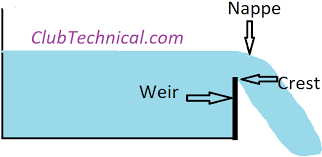THEODOLITE COMPONENTS PARTS AND ITS USES
A theodolite is a precision instrument used for measuring angles both horizontally and vertically. Theodolites can rotate along their horizontal axis as well as their vertical axis. Theodolites have a lot in common with transits. A transit is a surveying instrument that also takes accurate angular measurements
Theodolite survey: What are the types of theodolite?
Transit theodolite
A transit theodolite allows for a full rotation of the telescope installed inside the instrument around its horizontal axis in a vertical plane.
Non-transit theodolite
The telescope in non-transit theodolite cannot rotate 360 degrees around its horizontal axis on a vertical plane. To a certain extent, it can be turned to take vertical angles.
Theodolite category
We can further classify theodolite into two categories based on the scale. The first category is the Vernier Theodolites utilised in routine surveying operations, which are installed on a Vernier scale. The second is the Micrometre Theodolite installed in a Micrometre scale.
Theodolite survey: Size of theodolites
The diameter of a theodolite’s main scale determines its size; for example, a theodolite with a diameter of 10 cm has a main scale with a diameter of 10 cm. 8 cm to 12 cm theodolites are typically employed in surveys.
Trivet
A trivet comprises a circular plate with a threaded hole in the centre that allows the instrument and tripod stand to be securely fixed. The base plate is another name for this plate. Over this plate, the foot screws are fastened using a ball and socket configuration.
Foot screws
Foot Screws are needed to level the instrument in the ground appropriately and are also known as levelling screws.
Tangent screws
Two tangent screws make up the instrument; one is inserted into the lower plate and the other into the upper plate. To precisely bisect the ranging rod that has been put at the spot, the lower tangent screw is used, while the upper tangent screw is meant for a little movement of the scale reading.
Theodolite survey: Uses
Theodolite is used for a variety of tasks, although it is mostly employed for measuring angles and scaling construction work points. For instance, the increasing edges of enormous structures are employed as theodolites to identify highway locations.
Theodolite gives more curved readings, employing paradoxical faces and swings or varied positions for ideal measuring surveys, depending on the nature of the job and the level of accuracy necessary.
Some of the major uses of theodolite survey include:
- Measuring vertical and horizontal angles
- Finding level difference
- Finding points on a line
- Ranging curves
- Tachometric surveying



Comments
Post a Comment